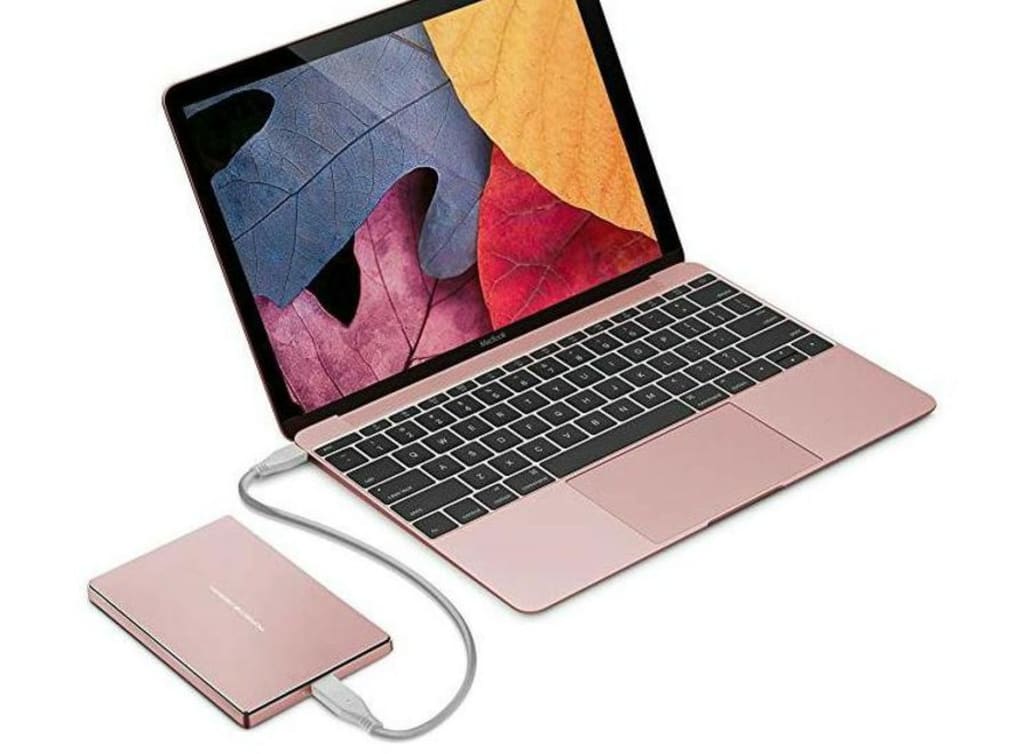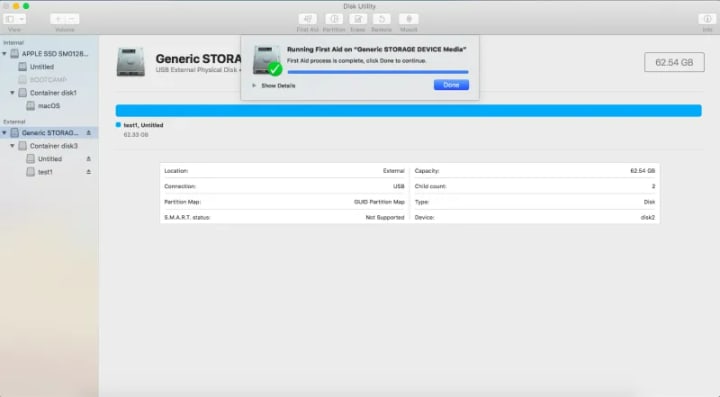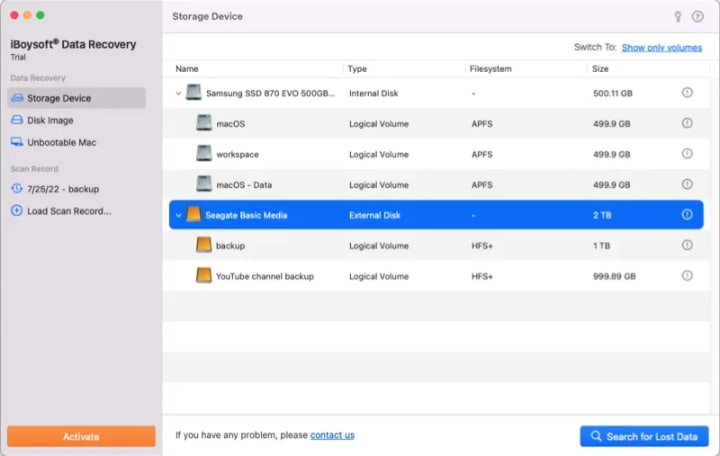
When your external hard drive connected to your Mac starts acting up, it can be a source of great frustration. The culprit behind this issue is often drive corruption, which denies you access to critical files and data. If you encounter error messages, face difficulties opening the drive, or notice that your Mac fails to recognize it altogether, chances are it has succumbed to corruption. Understanding why this occurs and knowing how to address it is crucial to ensure the safety of your files and data.
This article aims to equip you with the knowledge needed to comprehend the underlying causes behind a malfunctioning external hard drive on your Mac and guide you through the appropriate solutions. You will discover various techniques for fixing a corrupted drive and learn methods for recovering lost data without resorting to complete erasure. By the end, you will have a comprehensive understanding of how to resolve corruption issues with your Mac's external hard drive.
1) Identifying the Causes of Corruption in External Hard Drives on Mac
External hard drive corruption on a Mac can stem from several logical errors within the drive's partition table or file system. These errors often manifest as mounting difficulties, restricted access to files, or read errors. Such issues can occur on different external storage devices, including hard disk drives (HDDs), solid-state drives (SSDs), USB flash drives, and SD cards. Recognizing the signs of a corrupted hard drive involves error messages, inaccessibility of files, problems opening the drive, or even your Mac failing to detect it.
Common causes of external hard drive corruption on Mac systems include power outages, hardware malfunctions, operating system crashes, virus infections, and improper drive shutdown or ejection. These events can lead to logical errors within the drive's partition table or file system. Understanding these root causes is vital for pinpointing the appropriate solutions to rectify the issue. Continue reading to explore troubleshooting techniques and effective resolutions for external hard drive corruption on your Mac system.
2) Fixing a Corrupted External Hard Drive Without Reformatting – Three Solutions Explained
Solution 1: Verify IDE/SATA USB Connections between the Device and the Computer
One common cause of corruption in external hard drives on Mac systems is a faulty or unstable connection. This can occur due to worn-out cables, loose connectors, short circuits, or broken wires. To address this issue, follow these steps to verify the connections between your external hard drive and the host computer:
Remove any USB hubs or extension connections and connect the device directly to the computer.
Slowly unplug and re-insert the external device into the USB port.
Test the device on another USB port or a different Mac computer.
Try using a different USB cable to connect the hard disk to your Mac.
Check for updates in the App Store and ensure that all drivers are up to date, as outdated drivers may cause the external hard drive to be unrecognized.
Solution 2: Utilize Disk Utility for Repair
If the previous step didn't resolve the issue and the corruption is likely caused by a minor file system error, you can use the built-in Disk Utility app on your Mac to repair the problem. Follow these steps:
1. Navigate to "Applications" > "Utilities" and select "Disk Utility."
2. From the list of drives on the sidebar, choose the corrupted hard drive you want to fix.
3. Click on "First Aid" at the top of the Disk Utility window. The app will initiate the repair process, which may take some time to complete.

Solution 3: Use the FSCK Command for Repair
If Disk Utility fails to rectify the corruption and your Mac system still cannot recognize or read the external hard drive, you can try using the FSCK command as an alternative repair method. This command-line tool allows you to access inaccessible files stored on the device. Here's how you can utilize the FSCK command:
1. Open "Finder" and go to "Utilities," then select "Terminal."
2. Type the command "diskutil list" to see a list of connected drives on your Mac system.
3. Now find the the external HD you want to repair in the list and find its drive identifier (e.g. disk1, disk2, disk#).
4. Restart your Mac and hold down the "Command + S" keys before the Apple logo appears to boot into Single User Mode.
5. In the command prompt, type "/sbin/fsck –fy" followed by "/sbin/fsck_hfs -fy /dev/[drive identifier]" (replace "hfs" with the file system of your external hard drive and [drive identifier] with the identifier of the external hard drive).
6. Once the FSCK command has finished checking and repairing errors on the external hard drive, type "reboot" into the command prompt to restart your Mac system.
3). How to repair your external hard drive on Mac by reformatting the device?
If other repair methods have failed to fix your corrupted external hard drive, reformatting the device can be a viable solution, especially when the formatting and directory structure of the drive have been severely damaged.
However, it is crucial to note that reformatting the drive will result in the complete erasure of all data stored on it. To prevent data loss, it is highly recommended to recover any important data from the corrupted external hard drive before proceeding with the reformatting process, especially if you don't have a recent and complete data backup available.
Related Guide: How to Format External Hard Drive for Mac and PC
4). Recover Lost Files from Corrupted External Drives on macOS
To recover lost data from a corrupted external hard drive on your Mac, you can utilize specialized data recovery software like iBoysoft Data Recovery. This software is designed to retrieve lost data from external hard drives that have become unreadable or unrecognizable due to corruption, formatting issues, or other problems. It supports data recovery from various storage devices such as USB flash drives, memory cards, SD cards, as well as the recovery of files from the trash and lost or deleted APFS partitions.
Here are the steps to recover lost files using iBoysoft Data Recovery:
Step 1: Download and install the software on your Mac, then connect your corrupted hard drive and launch the software.
Step 2: Select the corrupted drive and click on "Search for Lost Data" to initiate the scanning process for recoverable files.

Step 3: Preview the recoverable files, select the ones you want to retrieve, and click "Recover" to save them to a different drive.
After successfully recovering your files, you can proceed with reformatting the hard drive to attempt fixing the issue. If reformatting is unsuccessful or results in an error message, it might be necessary to consider replacing the hard drive.
5). Strategies to Avoid External Hard Drive Corruption on Your Mac
Preventing external hard drive corruption on your Mac is crucial to safeguard your data and ensure easy access to it. Here are some strategies to help you avoid external hard drive corruption:
Keep your Mac's operating system and all software up to date.
Eject the external hard drive properly before disconnecting it to ensure data transfers are complete.
Use a surge protector or uninterruptible power supply (UPS) to protect your devices from power fluctuations.
Avoid exposing your external hard drive to extreme temperatures and high humidity.
Regularly run disk utility checks on the external hard drive to identify and address potential issues.
Maintain a reliable backup of all important data stored on the external hard drive.
Consider upgrading to a more reliable and newer external hard drive model if you're currently using an older one.
By following these preventative measures, you can minimize the risk of external hard drive corruption on your Mac and enhance the longevity of your storage devices.






Comments
CarolineE is not accepting comments at the moment
Want to show your support? Send them a one-off tip.